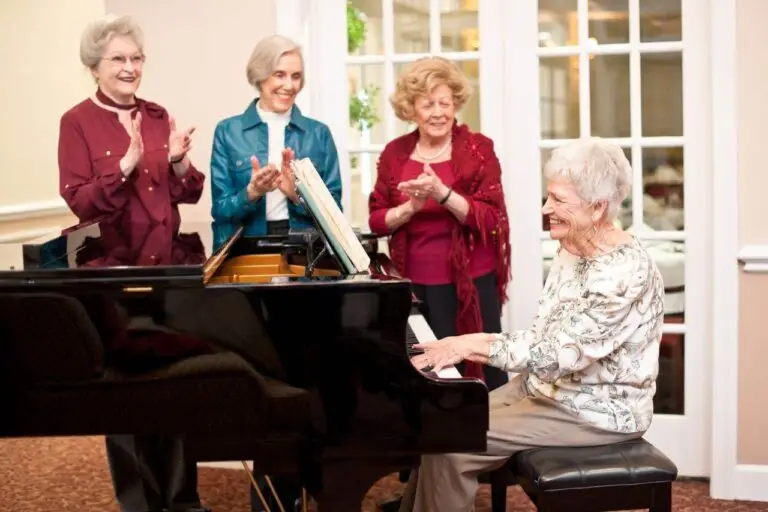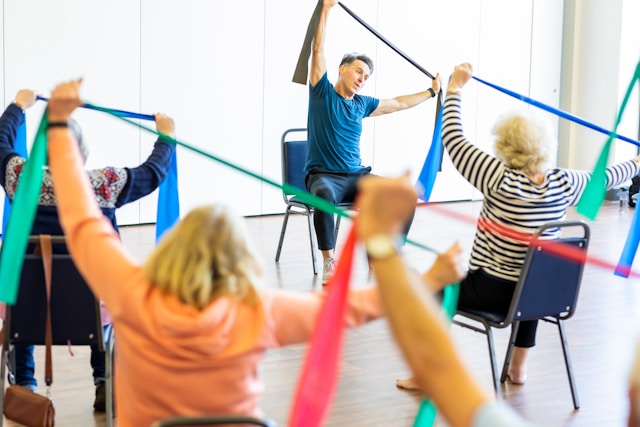Page Contents
This second part of the frailty series focuses on how older adults protect themselves from decline. Frailty progresses slowly, so early action matters. Many older adults stay stronger for longer when they build healthy routines and use simple tools to track their progress. This section explains practical strategies and the technology that supports safer ageing.
Physical strategies
Strength training supports muscle mass and mobility. Older adults benefit from short routines that target the legs, hips, and core because these areas drive walking and balance. Simple movements such as sit to stand, heel raises, and resistance band exercises improve function when done several times per week. Balance work is equally important. Practising single leg standing or shifting weight from side to side improves stability and reduces falls. Aerobic activity such as brisk walking raises heart fitness and maintains stamina. Even 10 to 15 minutes a day helps!
Nutrition completes the foundation. Older adults need steady protein intake from fish, eggs, tofu, lean meat, and dairy. Vitamin D and calcium support bone strength. Regular meals prevent weakness linked to skipped food and low energy.
Psychological and cognitive strategies
The mind influences physical function. Mental stimulation through reading, puzzles, music, or learning a new skill helps maintain attention and memory. These activities encourage routine and structure, which support motivation. Mood health matters for daily function. Identifying low mood early helps prevent withdrawal and inactivity.

Good sleep habits also support cognition. A consistent sleep schedule, morning light exposure, and reduced caffeine intake help older adults stay alert in the day and rest better at night.
Environmental and social strategies
Living spaces influence frailty risk. Simple changes, such as brighter lighting, stable flooring, and bathroom grab bars, reduce falls and injuries. Social activity protects both physical and mental health. Community exercise classes, day centres, and group hobbies encourage regular movement and provide motivation. Family members support adherence by helping older adults stay active, eat well, and join social activities. Regular interaction improves mood and gives older adults a sense of purpose.

Clinical interventions
Screening identifies early frailty. Tools that measure gait, grip strength, or daily function help providers note small changes that often go unnoticed. Managing long term conditions, such as diabetes or hypertension, slows muscle loss and preserves organ function. Regular reviews reduce complications that push older adults into a frail state. Medication checks also help. Reducing unnecessary drugs lowers dizziness, confusion, and falls. Monitoring side effects improves safety and supports independence.
How technologies can delay frailty?
Technology strengthens preventive care. Wearable devices measure step count, gait speed, heart rate, and sleep patterns, which reflect early decline.
- Smart home sensors alert caregivers about inactivity or possible falls.
- Telehealth connects older adults with clinicians without the need for travel.
- Video follow up supports exercise adherence and nutrition planning.
- Robotic rehabilitation devices guide safe gait training and improve muscle strength.
- Virtual reality programs offer interactive balance and cognitive exercises in a controlled environment.
- Medication platforms provide reminders and track adherence, reducing errors and missed doses.

Future trends in digital frailty care
Upcoming tools focus on prediction. Data from wearables, sensors, and clinical records help identify decline before symptoms appear. Community care teams may soon receive alerts when an older adult starts walking slower or becomes less active. These tools support personalised training plans and earlier intervention.

Conclusion
Frailty progresses when small declines go unnoticed. Daily habits, regular reviews, and steady social contact slow this decline and protect function. Strength work, good nutrition, and a safe home give older adults a strong base. Technology adds support by tracking activity, spotting risks, and guiding follow up. These steps help older adults stay mobile, stable, and confident as they age.
